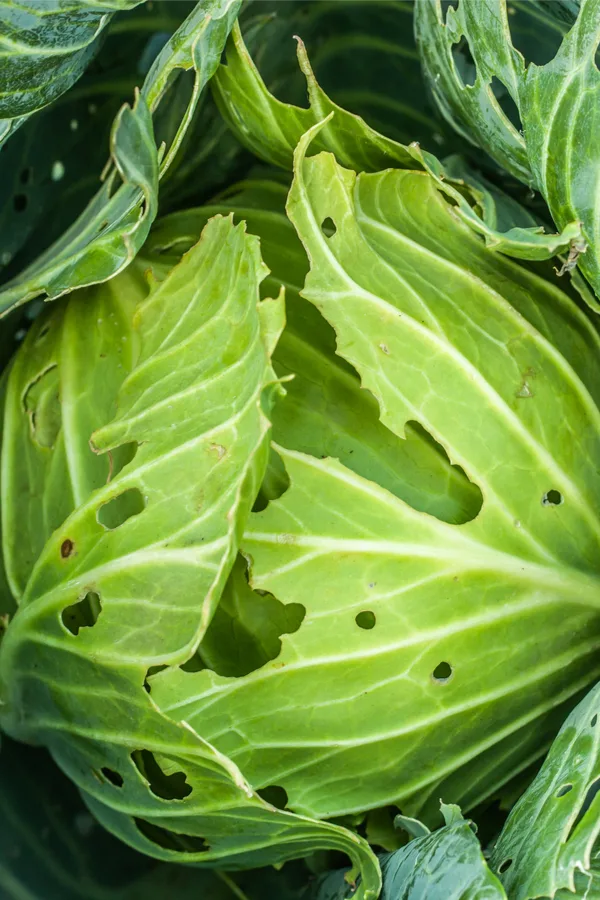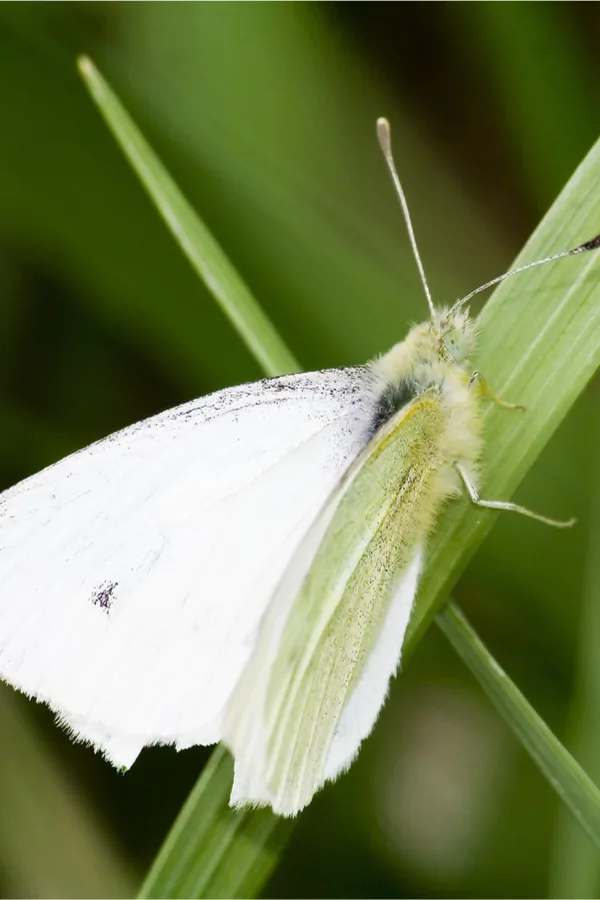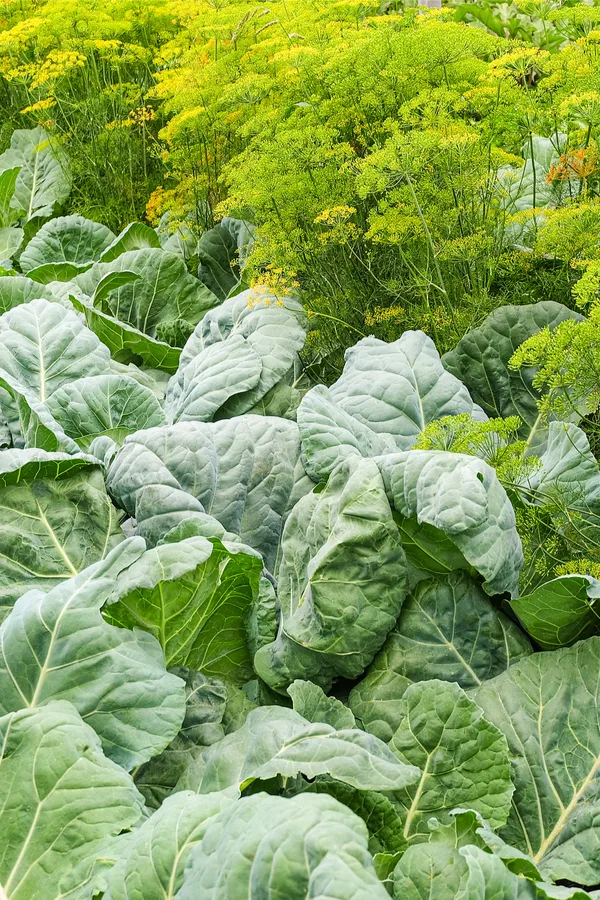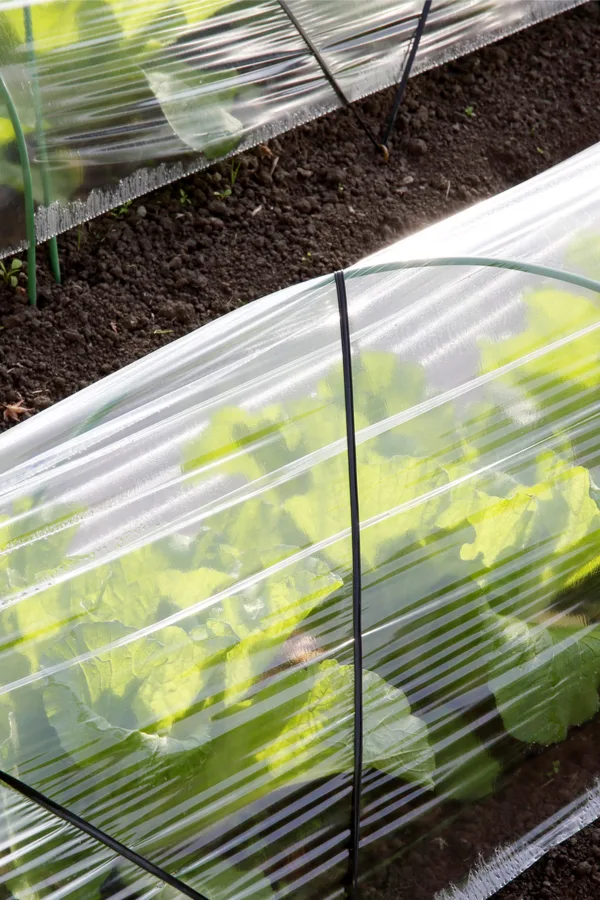When it comes to preventing damage from pests in the garden, stopping cabbage worms is usually near the top of the list for backyard gardeners.
Cabbage worms can all but decimate not just cabbage, but broccoli, cauliflower, and many other vegetable plants as well. And the Swiss-cheese like holes they leave in the foliage of plants are only the beginning of the damage they cause.
If left unchecked, cabbage worms will eat their way through an entire plant. And that includes the meaty portions of the vegetable in addition to devouring all of the leaves. In fact, without intervention, the only thing left behind is usually the thick center stem of the plant!

But as would luck would have it, controlling cabbage is not as difficult as it may seem. And even better, it can all be done without using harsh pesticides on the vegetables you harvest and consume.
Here is a look at how to spot early signs of cabbage worms, and how to protect your harvest from damage.
Identifying Cabbage Moths Early
As with many garden pests, the key to preventing serious damage from cabbage worms begins with early detection. And that means keeping a close eye on two tell-tale signs of their presence – eggs and small fecal matter.

Cabbage worms first arrive on plants in the form of eggs laid from the cabbage moth. Many novice gardeners mistake these white moths as butterflies as they float about the garden.
Although the moths do feed on blooms and nectar, their real purpose is to lay their eggs on the undersides of large leafy plants. And it just so happens that the oversized foliage of cabbage, kale, broccoli and cauliflower are their favorite target.
Spotting The Signs – Stopping Cabbage Worms
The single biggest factor for success in stopping cabbage worms is to take a consistent approach. To spot early signs of cabbage worms, walk your plant rows daily. It is amazing how fast they can progress if a few days pass between checks.
To spot early signs, look for small yellow, brown or greenish lumps of manure deposits.. This is the excrement of the small moths, and is usually fairly easy to spot on the green leaves.
The good news is at this point, little damage occurs to plants with just the eggs. And by finding them and removing them early, it will keep overall damage and infestation quite low.

At the first sign of any fecal matter, turn the leaves of plants over. Look for single, small white to yellowish eggs. Also be sure to check down into the tops of any heads forming on the plants for eggs.
Brush the eggs into a solution of water and a few drops of dish soap and continue to monitor your plants for any new signs of eggs or droppings from the moths.
It is always a good idea to remove the fecal matter as well so that you can spot new evidence of a visit. It is stunning how by simply making this a daily chore, you can eliminate most infestations.
Natural Methods To Stop Cabbage Worms
Even with the best of efforts, sometimes cabbage worms do find their way to their adult “worm” stage. When this occurs, there are several effective natural methods for control.
It is always important to realize that any spray, whether organic or not, will harm many good bugs in the process of killing off the bad ones. With that in mind, spraying should always be a last resort to keep balance in the garden.
After all, ladybugs, butterflies and parasitic wasps help patrol against many invaders. And killing these off can be just as detrimental to the overall health of your garden.
Here is a look at four of the most effective natural methods for control:
Natural Companion Plant Protection:
There are several herbs that are quite effective in repelling moths from visiting your plants. Thyme and dill are certainly two of the best at stopping cabbage worms from entering the space.
The moths simply do not like their fragrant leaves, and usually move on to better spaces. Dill can be seeded in the rows, and thyme can be grown in pots or the rows as a deterrent.

Mint is also quite effective when growing nearby to repel moths, although you will want to keep it in pots as it can be quite invasive in the ground.
Another great option for deterrent planting are marigolds. Planting marigold seeds around cabbage and other leafy plants will not only protect against moths and cabbage worms as the grow and flower, but also add beautiful color to the garden.
Much like the above-mentioned herbs, the scent of a marigold is quite offensive to the moths. In addition it can also keep many other pests and even mosquitoes away. See: How To Use Companion Planting In The Vegetable Garden
Row Covers
When it comes to stopping cabbage worms with 100% total effectiveness, it’s hard to beat row covers. When placed over cabbage and other leafy crops early in the season, row covers prevent the moths laying their eggs all together. And no eggs means no cabbage worms!

Row covers can be found in all sizes and lengths, and can be draped over rows to prevent damage. They can be a bit of an investment, but can be re-used year after year.
Cornmeal / Flour
For plants that are already hosting a few cabbage worms, you can use flour or cornmeal as an effective natural pesticide. Simply sprinkle your plants and the cabbage heads with a bit of flour or cornmeal.
The cabbage worms ingest the flour and it then swells and kills the worms in their tracks. You will need to reapply after heavy dew or rain to keep effectiveness high for this method.
Spraying Neem Oil
Neem oil is another all natural pesticide that can help stop and control cabbage worms. Made from pressing the seeds from neem trees, neem oil is 100% organic.
Neem oil acts as both a pesticide for the cabbage worms, and as a repellent to help keep the moths from laying eggs on the plants.
Keep in mind that it will also kill other insects as well, although it is far less harmful than a broad-based pesticide. It is, however, a good option if your crop is under heavy attack
Here is to stopping cabbage worms in your garden this year, and to protecting your harvest!
Follow Our Facebook Page For Great Gardening Tips And Advice! This Is My Garden Facebook Page
This Is My Garden is a garden website created by gardeners, for gardeners. Jim and Mary Competti have been writing gardening, DIY and recipe articles and books and speaking for over 15 years from their 46 acre Ohio farm. They publish three articles every week, 52 weeks a year. Sign up today to follow via email, or follow along!
